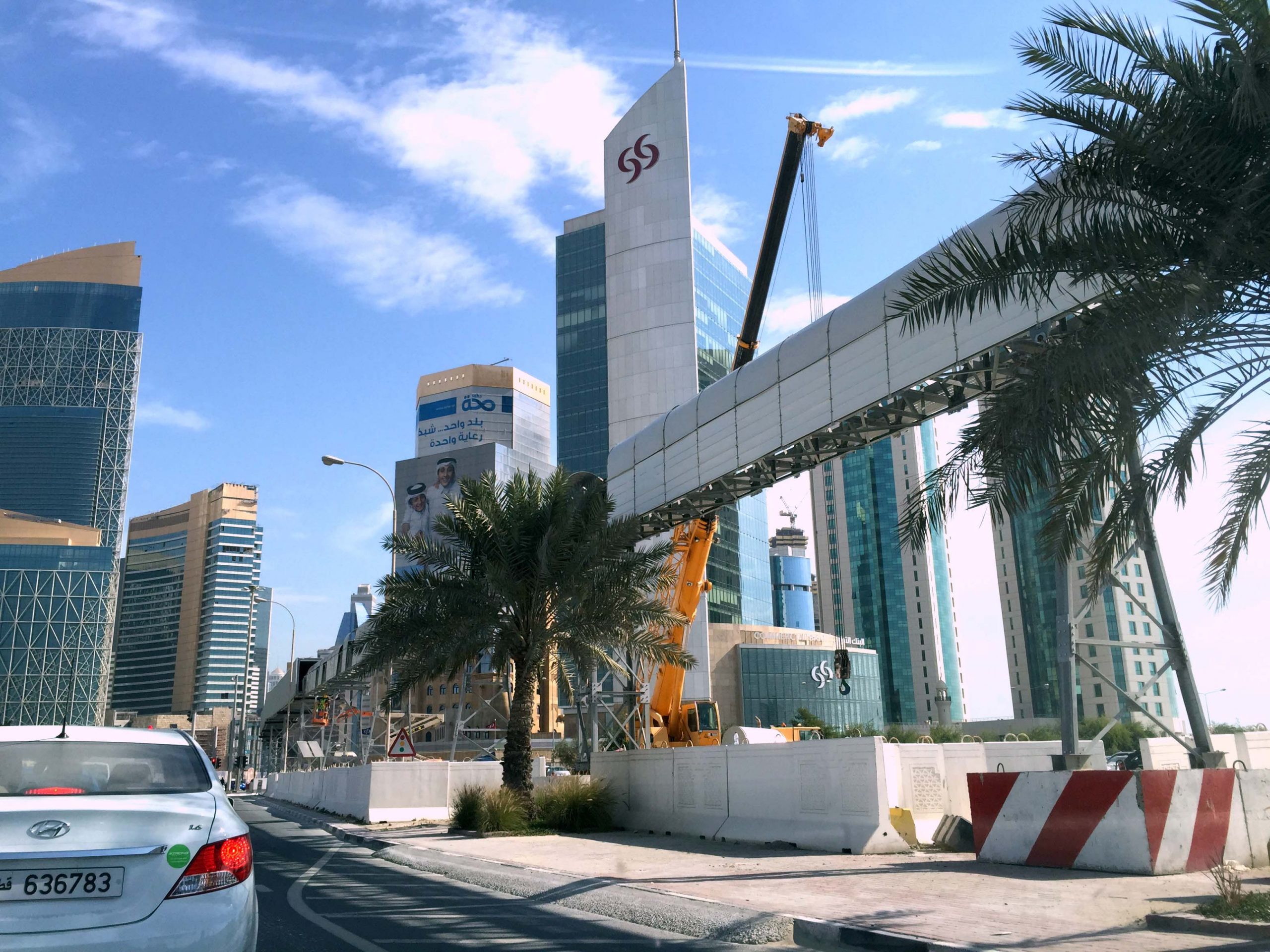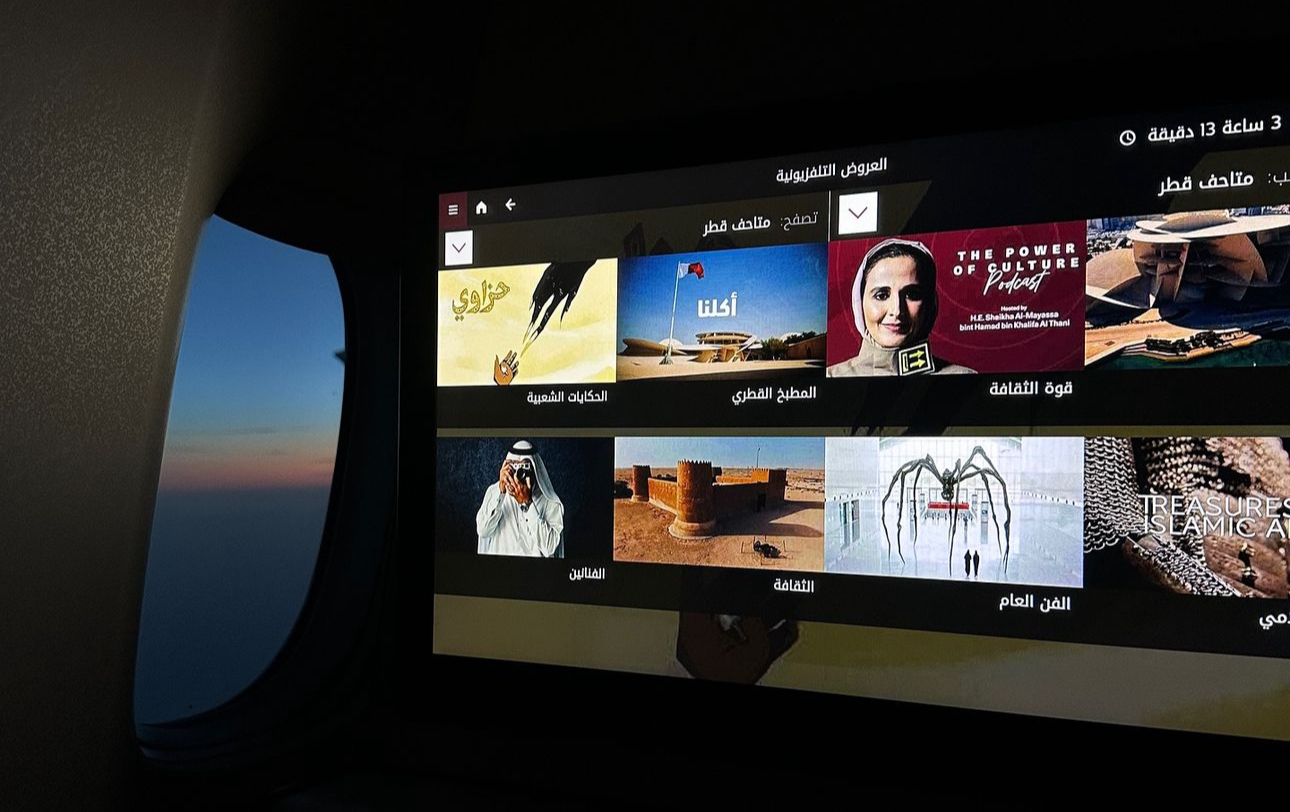
Many Qatar commuters may have noticed a new elevated track system in West Bay that has been going up on Majlis Al Taawon St. over the past two months.
The track is being built by Qatar Rail as part of its metro project for the area, a senior official there told Doha News.
Dubbed an “excavated materials conveyor belt,” it will transport all the dirt, sand and rocks dug out of the ground in order to create the West Bay Central and West Bay South stations.

And, in one of Qatar’s first major construction recycling projects, all the waste produced is expected to be reused during the construction of the long-distance GCC railway, Qatar Rail’s Logistics Director Ahmed Al Kowsi added.
The track system will be utilized over the next eight months as excavation continues to make way for two metro stations on the Red Line North, in the heart of Doha’s business district.
They are two of the 37 stations that are expected to open as part of phase 1 of the Doha Metro in 2019.
During that time, more than 400,000 cubic meters of material will be excavated. While a quarter of it would be reused as back-fill in the construction of the stations, the remainder needs to be taken from the sites, Al Kowsi said.
Traditionally, this would have been done by loading trucks with the waste, and transporting the garbage to a site away from the construction area.
However, that would equate to 62,000 truck trips up and down one of Doha’s busiest thoroughfares, contributing to traffic woes in the area and further polluting the atmosphere.

Planners at Qatar Rail initially had the idea of creating a man-made island using the dug-out material.
Barwa Real Estate was going to develop the QR20 million Oryx island as a 445-acre luxury resort with high-end villas, a water park and a marina for docking cruise ships.
But due to environmental issues, the project was eventually ruled out, and Barwa told Doha News in June last year that it had shelved its plans.
How it works
The conveyor belt system has successfully been used in other busy cities in the world, including London for the construction of its Crossrail project, as well as in Singapore and Hong Kong.
Qatar Rail brought it to Doha so that a part of the city could operate as normal during major development work in its center. Al Kowsi explained:
“When we looked at trucking out all that material in the conventional method, it would have put a big burden on the roads, on people and on the environment. When we proposed the Metro years ago, the main instruction was that we had to keep the city moving.
The conveyor belt method is a fantastic, viable alternative which has been used by other cities and has worked well.”
The system, which will run 2.44 km along Majlis Al Taawon Street as far as Palm Towers, has 5km of conveyor belt and sits 6.3m above the ground, with sections that sit over the roads boxed in to avoid any material dropping onto vehicles below.

Some 1,500 tons of steel and 1,300 cubic meters of concrete were used to build the system, which is currently in the testing phase but is expected to start operating fully by the end of this week.
Once dug out of the ground, the waste material will be loaded onto the conveyor belt and transported above ground to a depot opposite Al Bidda Park.
Everything that has been dug out from the two station sites will be recycled and go toward building embankments for the long-distance railway that will link Qatar to its GCC neighbors, which has a planned completion date of 2018.
“Nothing will be wasted, nothing will be dumped. We will treat then re-use 100 percent of this material, which is perfect quality for what we need for the long distance rail construction. I am proud that we are recycling all of it,” Al Kowsi added.
Once excavation is complete by the end of this year, the system will be dismantled and reused on another Qatar Rail-related project, he continued.
Qatar has been under pressure to recycle more of its construction debris, which makes up a significant percentage of the 7,000 tons of waste the country generates each day.
Late last year, the first recycled road in Qatar was built, using reclaimed and repurposed stones from a construction site and landfill.
The trial was part of research initiative between the public works authority Ashghal, the Ministry of Environment and others to encourage the public and private sector to reuse more of its construction materials where possible.
Thoughts?







